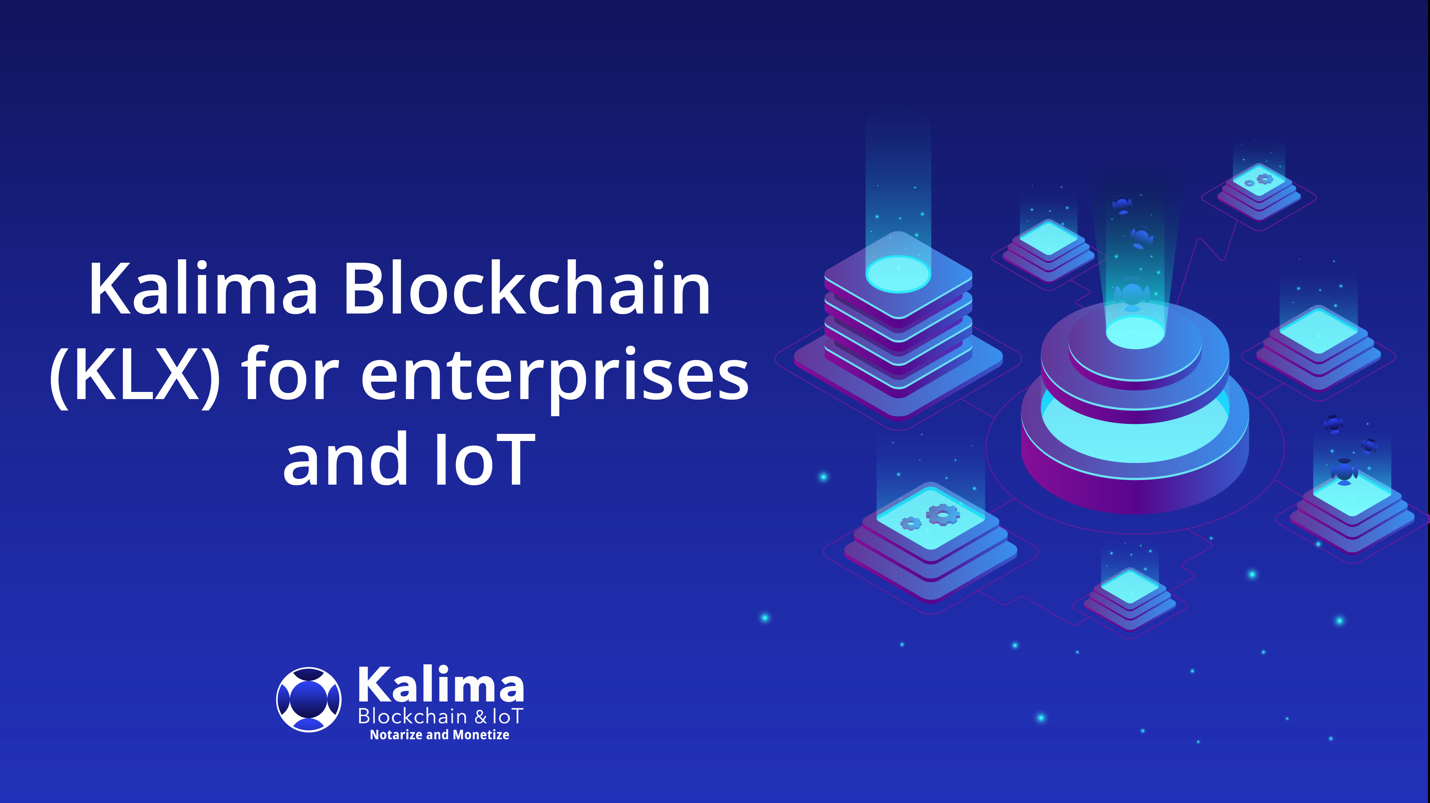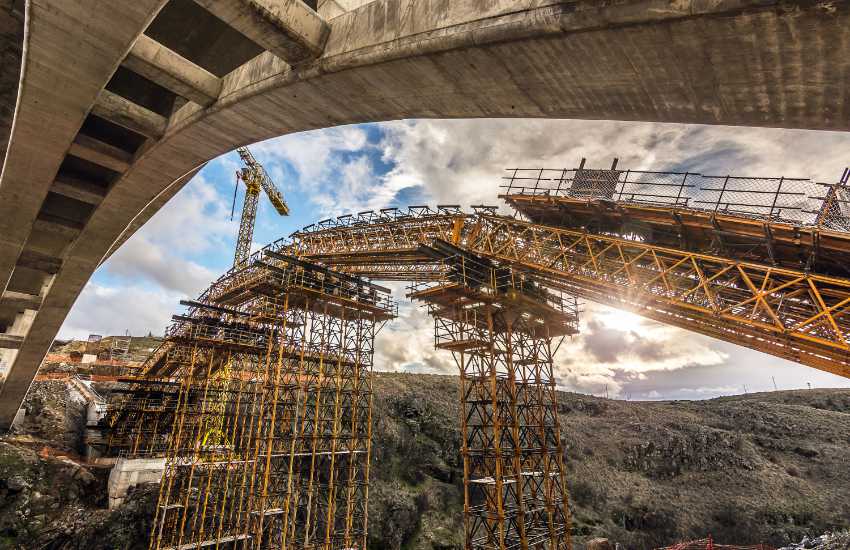Kalima Blockchain (KLX) for Enterprise and IoT

Disclaimer: The text below is a press release that is not part of Cryptonews.com editorial content.

Kalima’s KLX token is listed on the BitMart Exchange
As evidenced by social media channels and platforms, Kalima Blockchain has listed KLX on BitMart Exchange on February 2, 2023, opening up the utility token, “KLX”, for public exchange and trading.
After successful private sale rounds, KLX is expected to establish a new trend in the cryptocurrency industry in 2023. Given the trusted profile of Kalima and its utility offering, buyers expect the BitMart listing to propel KLX to new heights.
What is Kalima Blockchain?
Kalima is a rapidly growing ecosystem that allows businesses, developers and startups to build the future of Web3 Enterprise and Data Governance applications, specifically with Internet of Things (IoT) data, to solve real-world problems.
It is a layer 1 third-generation blockchain, which enables users to independently govern, manage and monetize data, build decentralized applications (dApps) and create tokens for smart reward systems by leveraging Kalima’s decentralized network of permissioned blockchains (PrivaChains).
Kalima was created with the goal of creating new or improving existing business models, everything from data notarization to decentralized finance (DeFi), tokenization (NFT), data monetization and industrial IoT (IIoT) applications (Digital Twins, Predictive Maintenance, Smart Infrastructure). , and so on).
Building dApps on the ecosystem is a natural process, actively supported by the Kalima Foundation, either for companies or developers who want to benefit from the Kalima network. Kalima provides powerful SDKs for developing dApps using standard languages and development tools, then simplifies dApp development and provides the necessary support and maintenance. The Kalima Foundation will host a series of hackathons and developer airdrops over the years to help developers hone their skills, starting with the first Kalima Developer Airdrop, which is currently enrolling developers.
Kalima uses a delegated Proof-of-Stake (DPoS) consensus mechanism, which not only allows PrivaChains to validate transactions independently, but also creates a blockchain with low energy consumption. This means that the resources needed to drive this consensus enable scalable operation, reducing the reliance on energy consumption for large PrivaChain users.
This also creates the possibility for the Kalima Blockchain to be embedded into small IoT devices, such as IoT gateways, Android and iOS phones and tablets, and more. This embedding capability enables smart contracts to run at the edge, which in turn enables securing data at the edge, i.e. the closest point of data to the source, but also for the blockchain to process approximately 85% of the data generated in such a configuration. Operators can run inference on AI models at the edge, enabling a much faster processing and transaction speed in the configuration overall. (Read more about Kalima Blockchain)
What is KLX?
KLX, Kalima’s token, listed on the Bitmart Exchange, provides a utility required for the Kalima Network’s functionality. Unlike other BIOT (Blockchain for IoT) projects, Kalima’s KLX is used to protect the entire network instead of just rewarding the users.
KLX can be used to pay transaction fees, stake, create validation pools, acquire PrivaChains and enable various important Kalima Network functions (eg monetization of data on oracle dApps).
The maximum supply of KLX is 480,000,000,000 KLX. The first supply release in 2023 will be 160,000,00,000 KLX. Kalima introduced safeguards to protect KLX holders from inflation. The KLX contains a deflation system with a halving mechanism; for every 16,000,000 new KLX produced, the validation reward is divided by two. It also contains a combustion mechanism, which contributes to Kalima’s ability to counteract inflation.
After successful private sales rounds where over 1 million euros of KLX were sold, KLX is now listed on the BitMart Exchange as an ERC20 on the Polygon Network, and DEX listings for KLX are on the horizon.
When the Kalima MainChain goes live in 2024, the KLX token will transition from an ERC20 token to a native KLX token on the Kalima network. Every ERC20 token holder will be able to convert their token to the native KLX token.
Why now is a good time for KLX to go public
Given the state of the cryptocurrency and global markets right now, one would wonder why now would be a good moment for such an entry. The volatility last year caused by interest rate hikes and selling of volatile assets like cryptos may have given the impression that all is doom and gloom. However, as we head into a new year, 2023 seems to offer a lot more optimism when it comes to the hunt for cryptocurrency to buy below the bottom. As Bitcoin’s mining rewards are set to be halved somewhere in Q1 2024, and as most cryptocurrencies correlate with Bitcoin, this halving could set off another crypto bull run next year, repeating the historical pattern.
While this may generally justify buying cryptocurrencies today or in the near future, KLX’s listing implies other factors that make this specific timing fair. As noted by NASDAQ, Yahoo Finance and Markets Insider, KLX is now seen as one of the best cryptocurrencies to buy before the Bitcoin halving. Not only could the ecosystem’s explosive potential fuel KLX’s growth, but the tokenomics implemented by the Kalima Foundation are expected to defy current market expectations regarding the token.
As the remarkable failure of FTX heralds the start of a new era defined by more cautious and utility-driven investors and users, projects that were previously well-regarded, such as artistic NFTs, metaverse worlds, redundant tier 2-3 projects and others, is now receiving less praise and recognition from cryptocurrency investors and users. On the other hand, projects like Kalima Blockchain, born out of necessity, designed for real-world use cases, and already tested and proven to be tool-driven, can define the answer to the new Blockchain and cryptocurrency spheres. expectations.
Finally, the timing of the entry fits into the Kalima network’s (composed of approved blockchains known as “PrivaChains” and a public blockchain defined as the “Kalima MainChain”) vision for widespread adoption. Kalima Network’s deployment is currently underway; in Q2 2023 the network will begin to expand with the addition of six validation pools dedicated to the testnet and current customers. It will expand to 100 pools to provide a safe environment for users.
By the time Kalima MainChain launches in 2024, and when the KLX token transitions from an ERC20 token to a native KLX token, KLX is poised to outperform other emerging tokens in the cryptocurrency market.
As stated by Yannick Delibie, Kerlink CTIO, “The convergence of IoT and blockchain combined with tokenization is a key element in the near future to envisage new business models, based on reliable architecture, data traceability, immutability and smart contracts or decentralized applications (DApps) at the edge of IoT networks”.

























